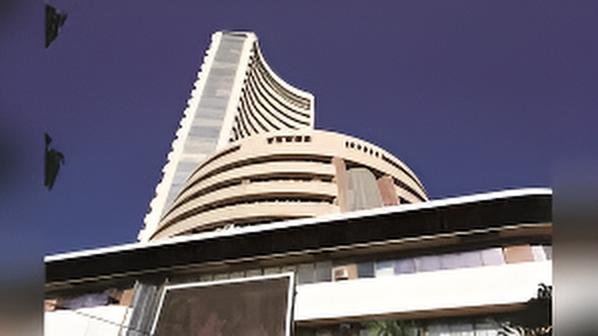Indian stock market went through a turbulent trading day on Thursday, October 23, 2025, as the initial positive sentiment turned out to be less successful because of profit booking and poor global cues. Though the start of the day was strong, both Sensex and Nifty were unable to sustain their momentum by the time the day was over, being pulled down by the higher prices of crude oil, global uncertainty, and the volatility in the market that was going up.
📊 Market Summary
Again, the BSE Sensex moved up as much as 863 points to the intraday high of 85,290.06, but it managed to pare most of its gains and finally ended up with only 130 points (0.15%) rise at 84,556.40. The same happened with the NSE Nifty 50 which closed just a fraction higher by 22.8 points (0.09%) at 25,891.40.
The top losers included Eicher Motors, Bharti Airtel, UltraTech Cement, InterGlobe Aviation, and Eternal, their stock prices went down by up to 3% during the day. At the same time, the Bank Nifty, after reaching an all-time high of 58,577, went down by more than 400 points and finished at 58,161.
⚠️ Four Major Factors Behind the Market Drop
1️⃣ Profit Booking at Record Highs
After the stocks hit record highs, the investors decided it was best to cash in the profits leading to a sharp reversal of the intraday trade. Traders were not very confident as they were worried about the geopolitical tensions and the negotiations on trade between India and the USA being dragged on longer than anticipated.
“Domestic equities opened on a strong note but later lost momentum as traders took profits after the new Russian oil ban and uncertainty in global trade,” said Vinod Nair, Head of Research, Geojit Financial Services.
2️⃣ Crude Oil Prices Rebound
Brent crude went up by 2.56% to$ 64.19 per barrel which made the inflation concerns to come up again. The rise in price of crude oil was mainly due to the restrictions imposed on the Russian oil companies, Rosneft and Lukoil by the U. S. Government because of the Ukraine war which raised the fears regarding the financial stability of countries and increase in cost of raw materials.
3️⃣ Negative Global Market Sentiment
The Asian stock indices such as Japan’s Nikkei 225, Shanghai Composite, and Hong Kong’s Hang Seng were all in the red, which showed that the investors were not very confidant.
In the U. S. not only the stock markets went down, but also the causes were mixed corporate performance and ambiguity regarding trade policies, once again the domestic sentiment was affected negatively.
4️⃣ Increase in Market Volatility (India VIX)
The India VIX, which is a major indicator of market volatility, indicated a 3.3% increase to 11.73 which meant short-term uncertainty was growing. A higher VIX is usually associated with trader caution — particularly after a strong market rally.
💬 Expert Outlook
Puneet Singhania, Director at Master Trust Group, believes that the Nifty will continue to be supported strongly around the 25,400–25,500 levels.
“This area is a very good place for the current uptrend to continue as domestic demand is healthy and there are also continuous inflows of funds,” he said.
Nevertheless, the analysts are warning that the short-term prognosis may stay under the weather with the likelihood of profit taking continuing at elevated levels due to geopolitical risks and high commodity prices.






